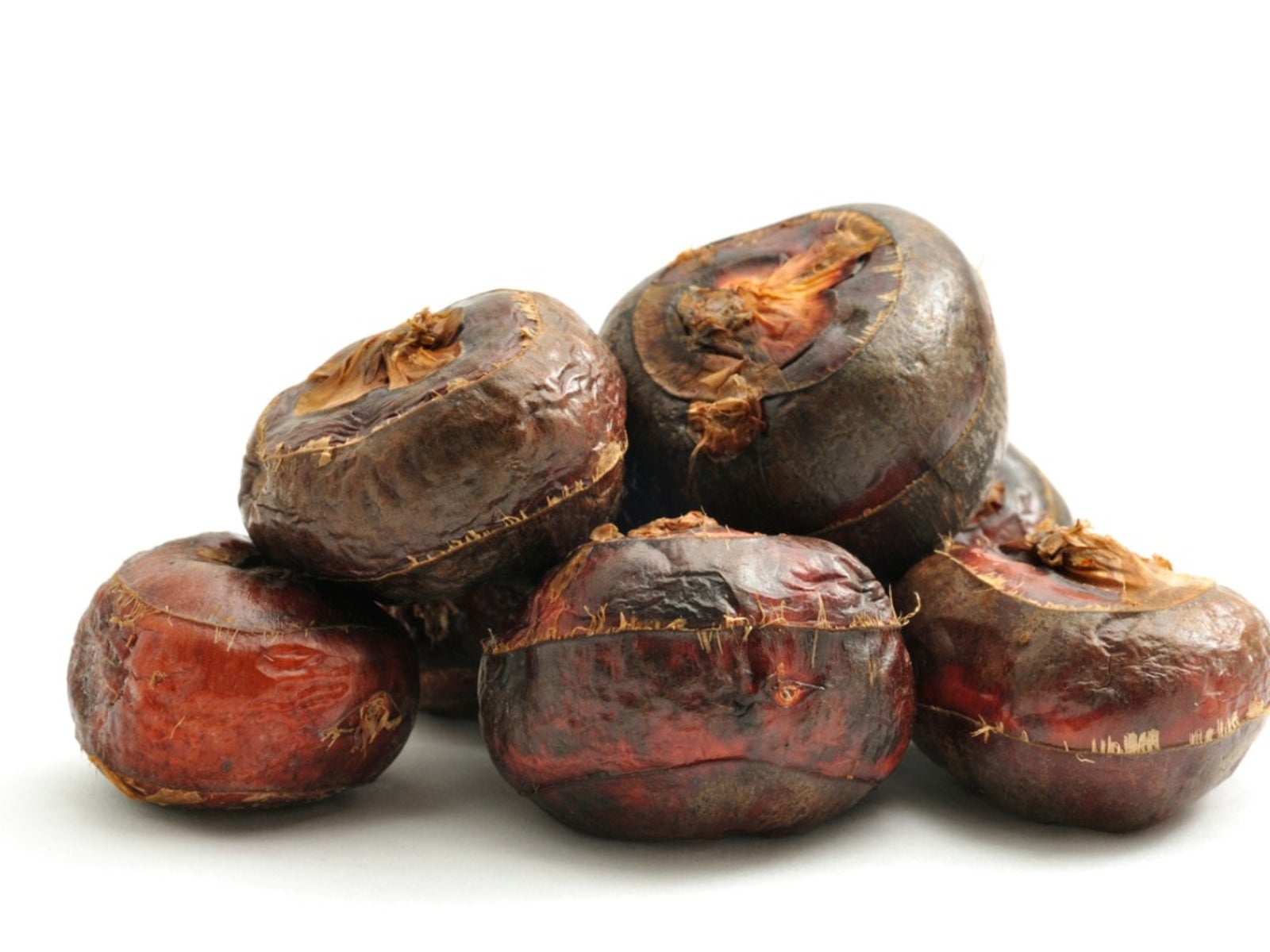
There are two plants referred to as water chestnut plants: Eleocharis dulcis and Trapa natans. One is commonly thought to be invasive while the other may be grown and eaten in a number of Asian dishes and stir-fries. Keep reading for more information on these water chestnut plants.
Water Chestnut Facts
Trapa natans, sometimes called “Jesuit Nut” or “Water Caltrops,” is a water plant with huge floating leaves grown in ponds. Cultivated in China and commonly used in that cuisine, it is also grown to a lesser extent in southern Europe and Asia. This type is considered invasive in most areas. E. dulcis is also grown in ponds primarily in China and the edible tuber is then harvested for food. These water chestnut plants are members of the sedge family (Cyperaceae) and are true aquatic plants growing only in water. In the body of this article, we will be focusing on the growing of this type of water chestnut plant. Another water chestnut fact is its nutrition content; water chestnuts are quite high in sugar at two to three percent and contain 18 percent starch, four to five percent protein, and very little fiber (1 percent). These crunchy delicacies have a slew of other common names such as: waternut, horse's hoof, matai, hon matai, Kweilin matai, pi chi, pi tsi sui matai, and kuro-kuwai.
What is a Water Chestnut?
Growing water chestnuts look like other water rushes with four to six tube-like stems that poke 3 to 4 feet (1 m.) above the surface of the water. They are cultivated for their 1 to 2 inch (2.5-5 cm.) rhizomes, which have crisp white flesh and prized for its sweet, nutty flavor. The tubers look somewhat like gladiola bulbs and are dirty brown in color on the outside. They are extremely valued ingredients in many Asian cuisines as well as culturally. They can be found not only in stir fries, where the crunchy texture is maintained due to the hemicellulos found in the tubers, but also in sweet drinks or syrups. Water chestnuts are also used for medicinal purposes in Asian culture.
Can You Grow Water Chestnuts?
Growing water chestnuts are primarily cultivated in China and imported to the United States and other countries. Rarely have attempts been made to cultivate in the U.S.; however, it has been tried in Florida, California, and Hawaii with limited commercial success. Water chestnuts require controlled irrigation and 220 frost free days to reach maturity. Corms are planted 4 to 5 inches (10-13 cm.) deep in soil, 30 inches (76 cm.) apart in rows, and then the field is flooded for a day. After that, the field is drained, and the plants are allowed to grow until they are 12 inches (31 cm.) high. Then, once again, the field is flooded and remains so for the summer season. Corms reach maturity late in the fall wherein the field is drained 30 days prior to harvest. Water chestnuts cannot exist in swamplands or marshlands unless ditches or dikes are in place to control the water levels. That said, the question, “Can you grow water chestnuts?” takes on a bit different meaning. It's unlikely that the home gardener will have much success growing water chestnuts. However, don't despair. Most grocers of any size carry canned water chestnuts to satisfy that yen for some crunchiness in your next stir fry.
Sign up for the Gardening Know How newsletter today and receive a free copy of our e-book "How to Grow Delicious Tomatoes".

Amy Grant has been gardening for 30 years and writing for 15. A professional chef and caterer, Amy's area of expertise is culinary gardening.
